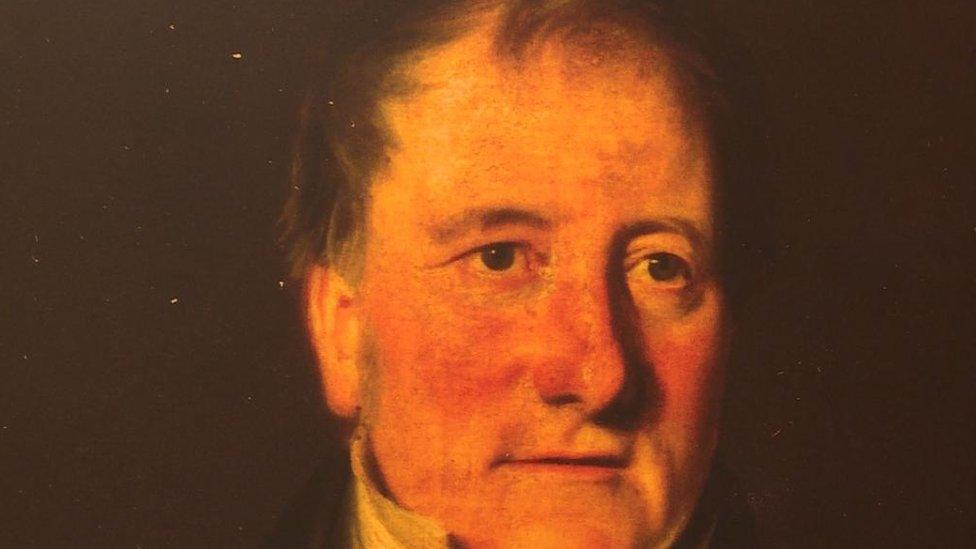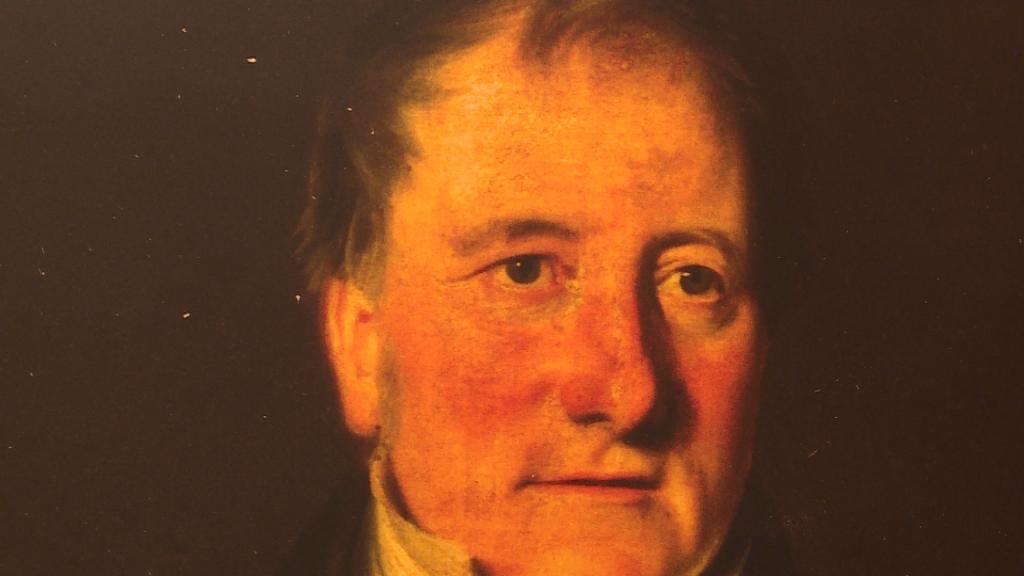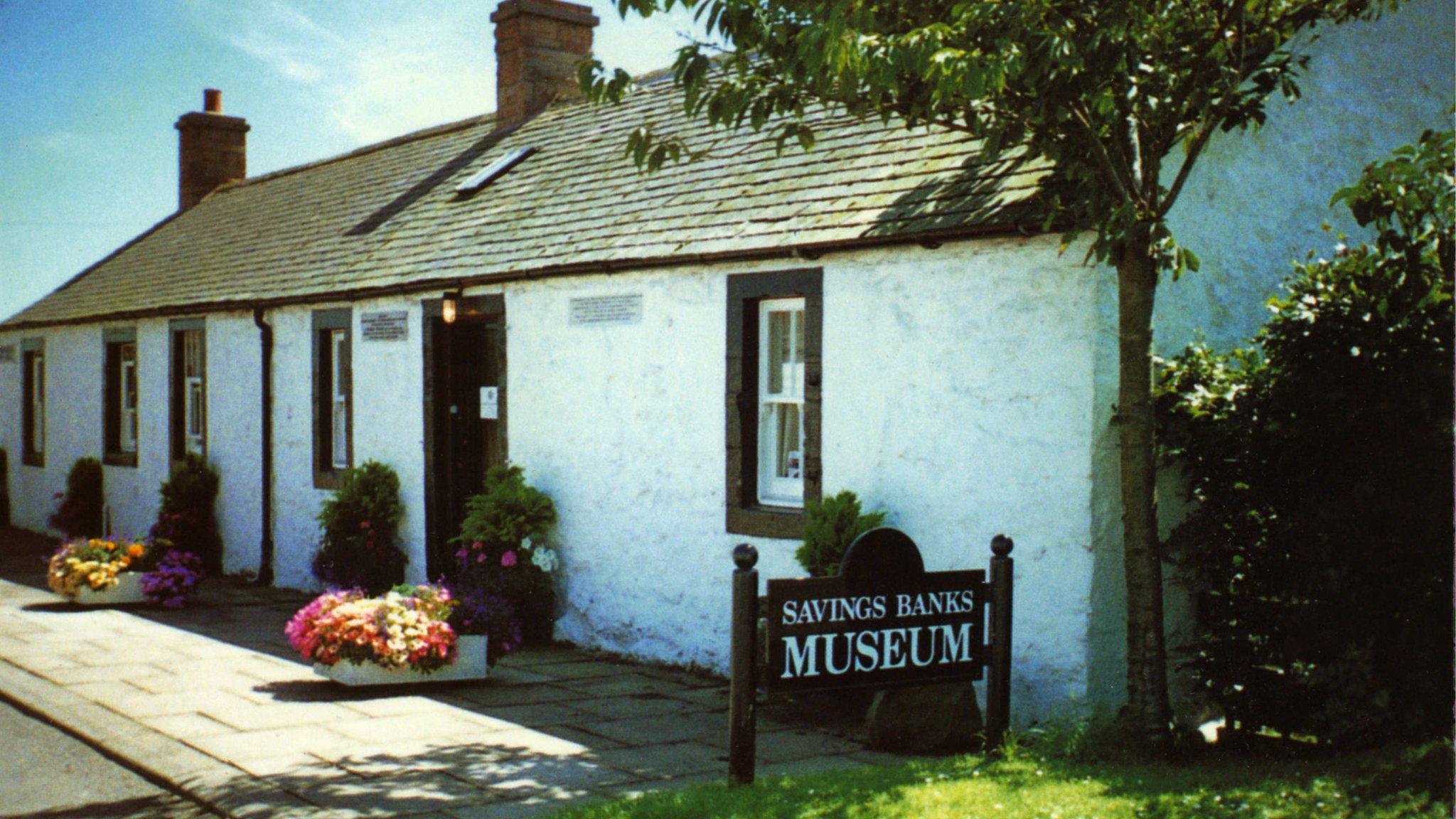TSB plans to shut first savings bank site museum in Ruthwell
- Published

The bank is proposing to shut the museum and move its contents to Edinburgh
The TSB has revealed plans to permanently close a museum at the site of the world's first savings bank and transfer its contents to Edinburgh.
Minister Henry Duncan set up his "penny bank" for parishioners in Ruthwell in the south of Scotland in 1810.
MP David Mundell has called on the company to retain the museum and visitor centre it runs in the village.
The TSB said its plan to take the contents to its HQ - Henry Duncan House - would allow more people to see them.
Mr Mundell, however, said the transfer would be a blow to the region.

Henry Duncan opened his savings bank in Ruthwell in 1810
He said the Savings Bank Museum - which has been shut during the Covid pandemic - represented an important part of the area's heritage.
"At the very least the TSB should review this decision and every option to retain the museum in its true home should be explored," he said.
He has contacted the bank - which has previously paid tribute to the "inspiration" provided by Henry Duncan and used him in advertising campaigns - to try to halt the "misguided" move.
"The Savings Bank Museum represents not just a hugely important part of our local history, it is a tourist attraction with a potential that has not been fully realised," he said.
Mr Mundell said the move ignored the local connections of Rev Duncan's story and would also affect two members of staff.
He said it would be an "unpopular decision" in the area which he hoped there was still time to stop.
A TSB spokesperson said: "The museum in Ruthwell was closed last year because of lockdown and TSB is creating a new exhibition in our Edinburgh head office, Henry Duncan House.
"The Henry Duncan story is a proud part of TSB's history, and by having these items on display in our head office in central Edinburgh we believe more people and colleagues will be able hear and learn about his significant contribution to Scotland."
It added that the museum had a "relatively small" number of visitors and that talks would be held to see if items which were of more local interest could remain in the area.
Related topics
- Published30 November 2017

- Published26 May 2016

- Published9 September 2013
